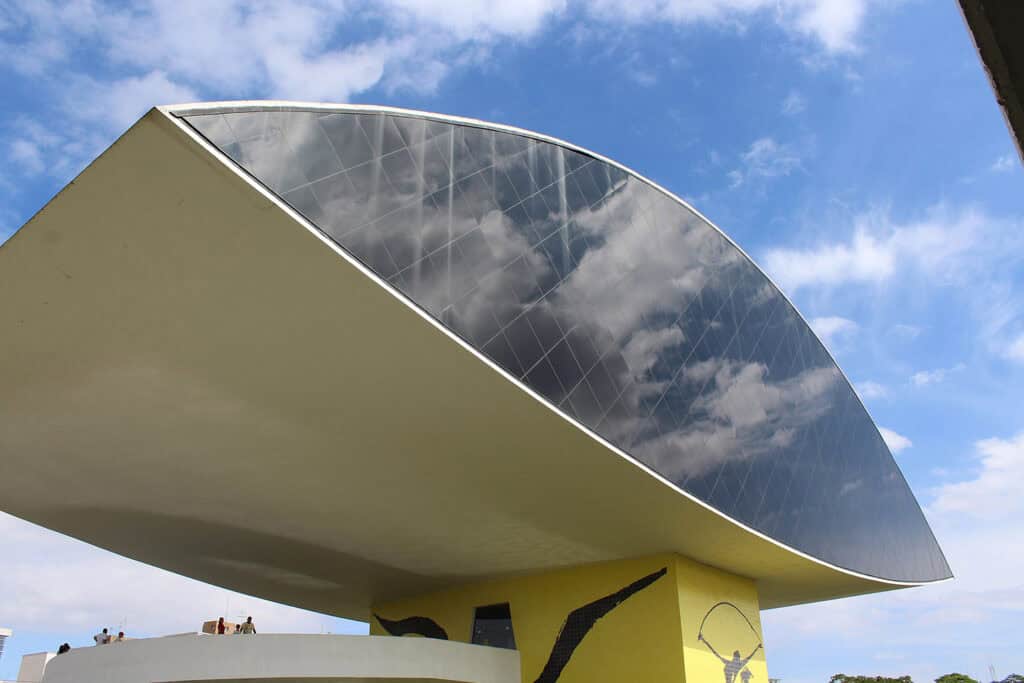
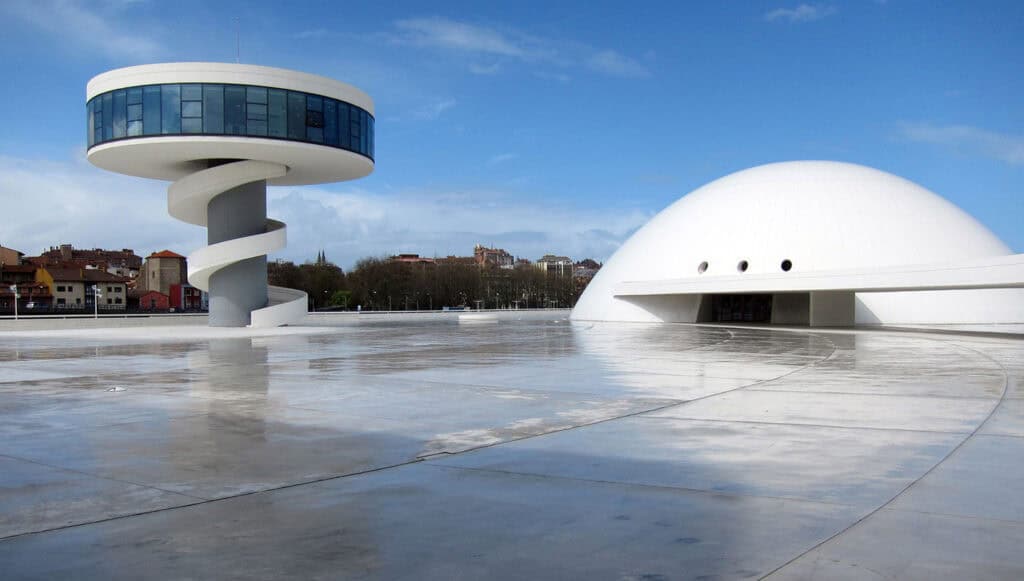
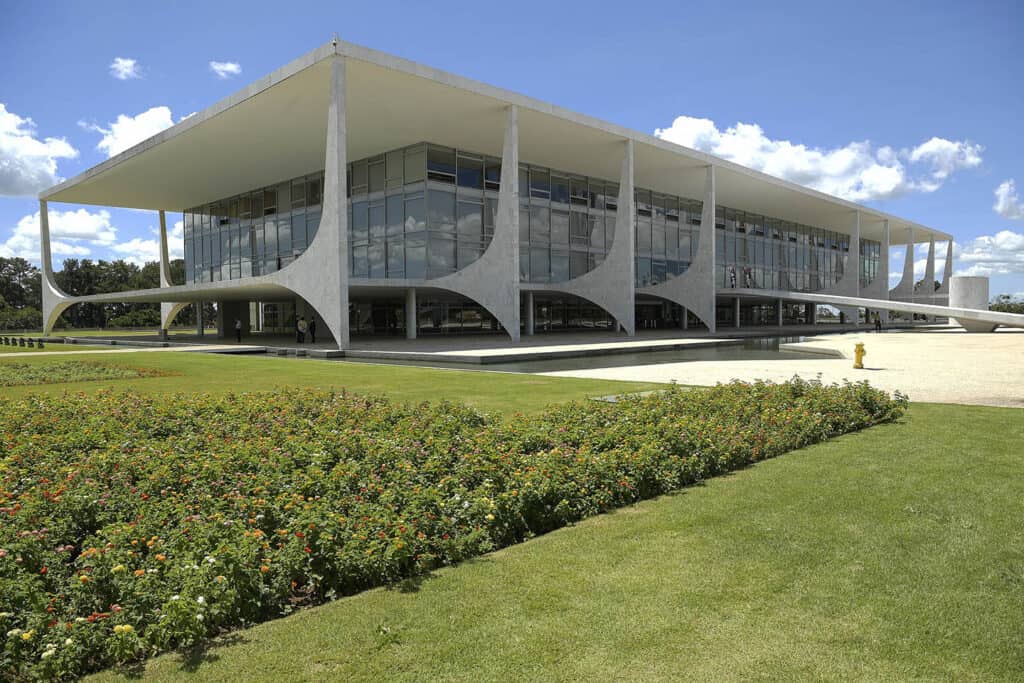
How did Oscar Niemeyer change how we see architecture? His use of sweeping curves and futuristic designs redefined modern building styles. Niemeyer’s mix of art and function challenged old ideas, making every building a piece of sculptural art.
At Landmarks Architect, we’re fascinated by how visionary architects shape our world. In this article, we’ll uncover:
- Sculptural curves and organic forms
- Innovative use of reinforced concrete
- Integration with the landscape
- Minimalist aesthetics with monumental scale
- The interplay of light, shadow, and color
- Social and Political Reflections
- A futuristic, visionary approach
Join us as we look at what makes Niemeyer’s style unique and see how his designs still inspire and shape modern architecture.
- 1. Sculptural Curves and Organic Forms
- 2. Innovative Use of Reinforced Concrete
- 3. Integration with the Landscape
- 4. Minimalist Aesthetic with Monumental Scale
- 5. Light, Shadow, and Color in Design
- 6. Social and Political Ideals in Architecture
- 7. Futuristic and Visionary Approach
- Oscar Niemeyer Architecture Style: A Recap
- FAQ
1. Sculptural Curves and Organic Forms
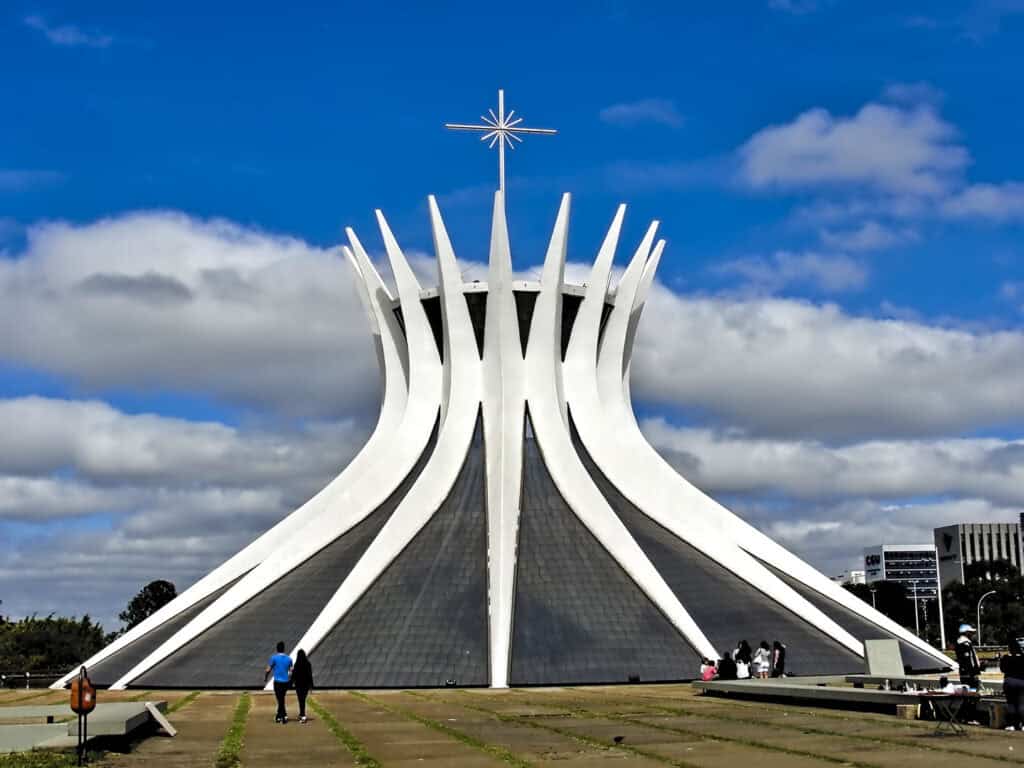
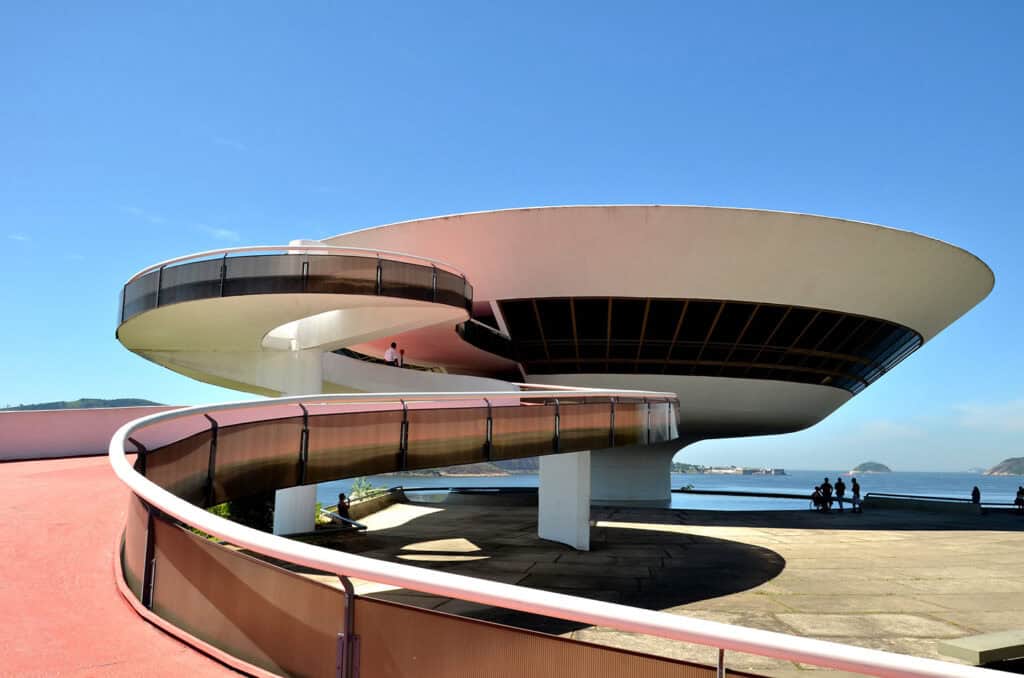
Brazilian architect Oscar Niemeyer is known for his smooth curves and natural shapes. Unlike Le Corbusier, who used straight lines and sharp shapes, Niemeyer used soft, rounded forms that blended with their surroundings.
His designs are modern but also inspired by nature, making his buildings both practical and beautiful.
Niemeyer focused on how light and space work together. Each curve adds to the building’s look and feel. His creative use of concrete and unique style made him famous worldwide, and his work still inspires many architects today.
Here are some examples of Niemeyer’s work:
- Cathedral of Brasília: This building in Brasília, a UNESCO World Heritage Site, is an example of Famous Architecture in Brazil with its sweeping, curved lines that create a feeling of openness and peace, making visitors feel like they are looking up to the sky.
- Niterói Contemporary Art Museum: The museum in Rio de Janeiro has soft, rounded curves that mirror the nearby water. This design makes the building feel like part of the landscape.
See Also What Are the Elements of Modernist Architecture? Discover the 8 Fundamental Features
2. Innovative Use of Reinforced Concrete
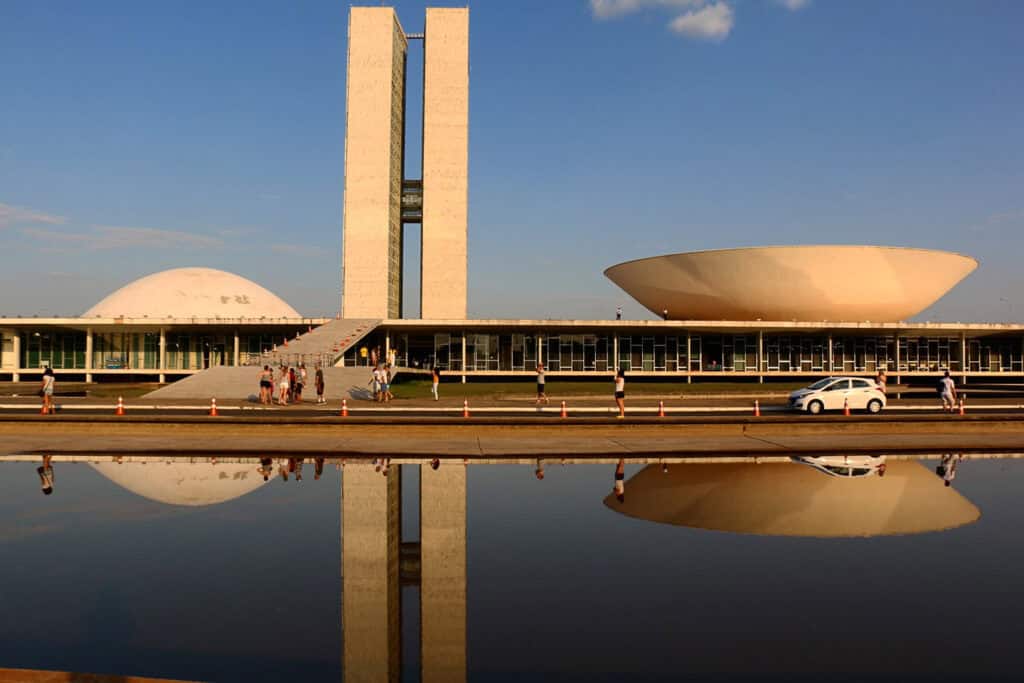
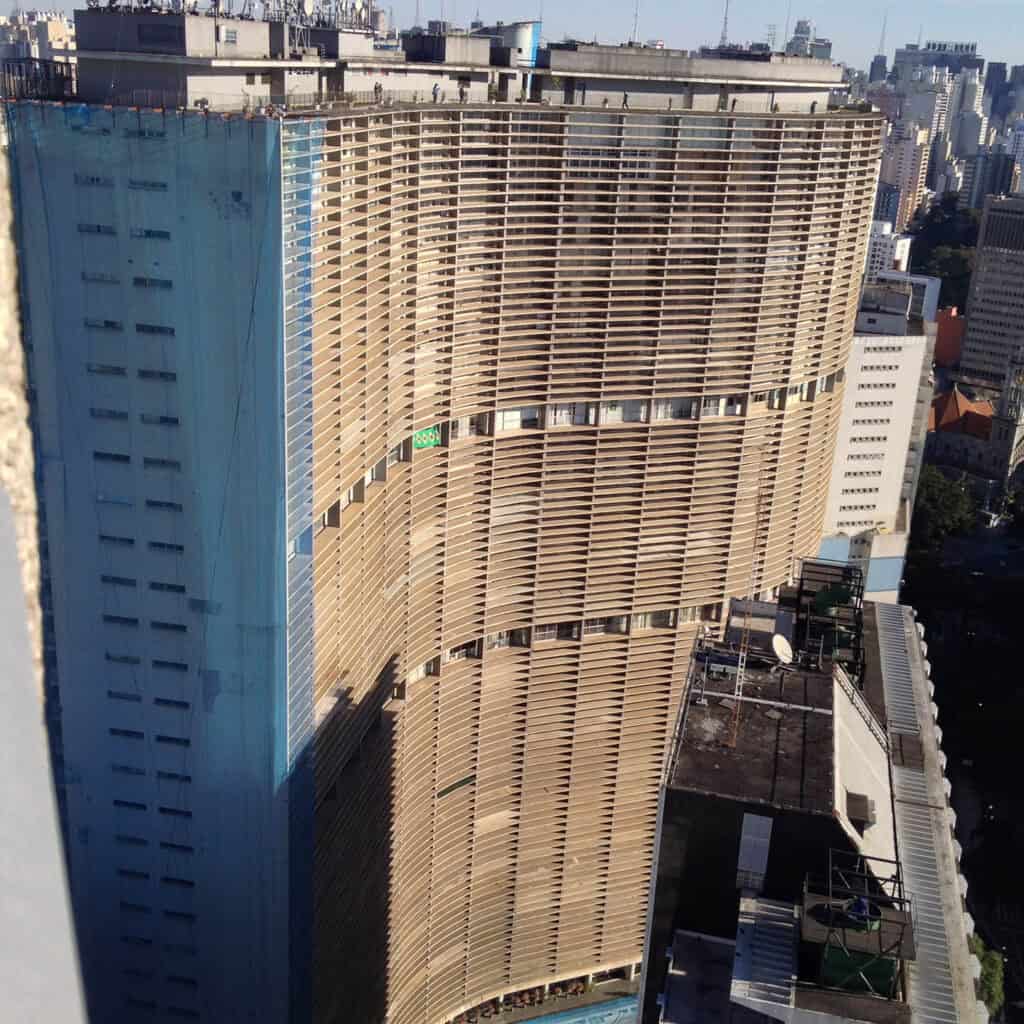
Oscar Niemeyer became famous for his creative use of reinforced concrete. This allowed him to design buildings with bold curves instead of straight lines. Unlike Le Corbusier, who used straight, geometric shapes, Niemeyer showed that concrete could be both strong and beautiful.
His ideas changed architecture and proved concrete could be used in many ways. Today, his work still inspires architects around the world.
Some iconic examples of Niemeyer’s work include:
- National Congress of Brazil: Here, concrete is used for both structure and beauty. In this UNESCO World Heritage Site, Brazilian architect Oscar Niemeyer worked with structural engineer Bruno Contarini to blend the principles of the International Style with his artistic vision and engineering skills.
- Copan Building in São Paulo: This building features smooth, flowing lines made possible by reinforced concrete. Niemeyer’s design, reflecting Modern Architectural Styles, shows how materials can affect the way people experience a space.
3. Integration with the Landscape
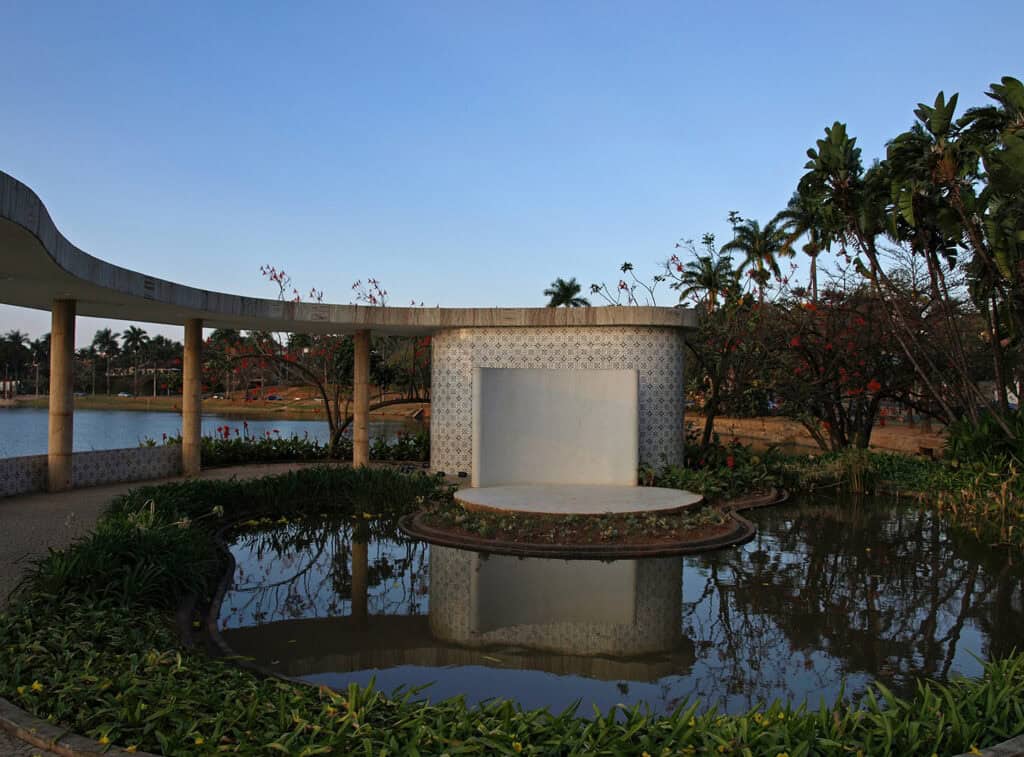
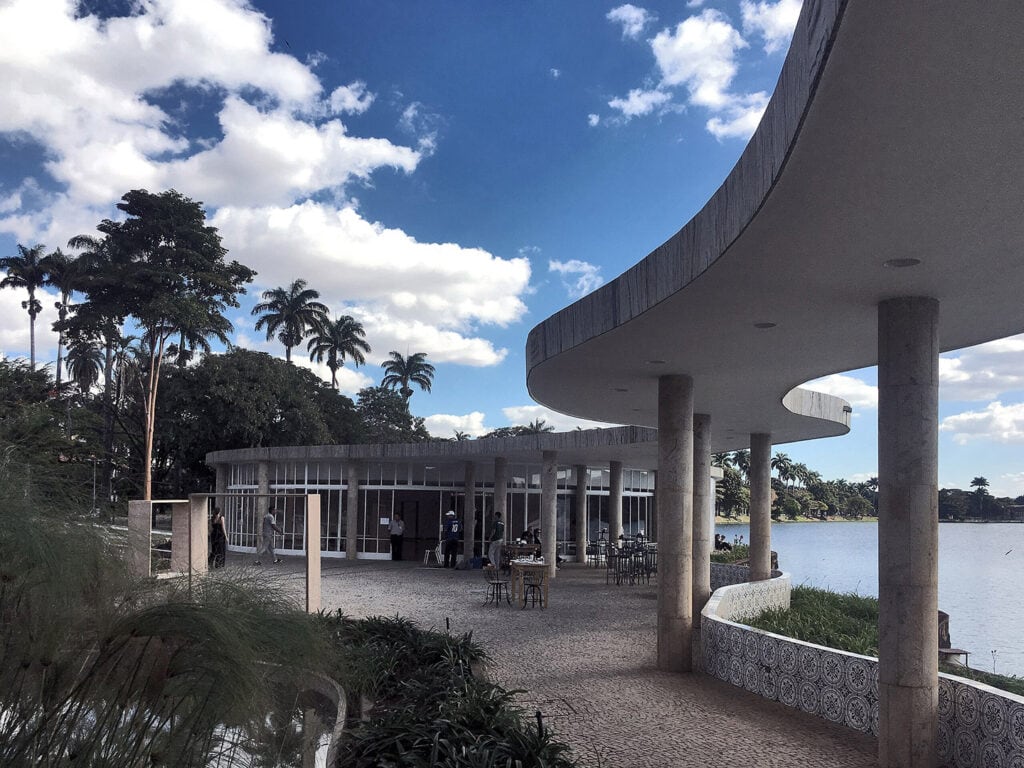
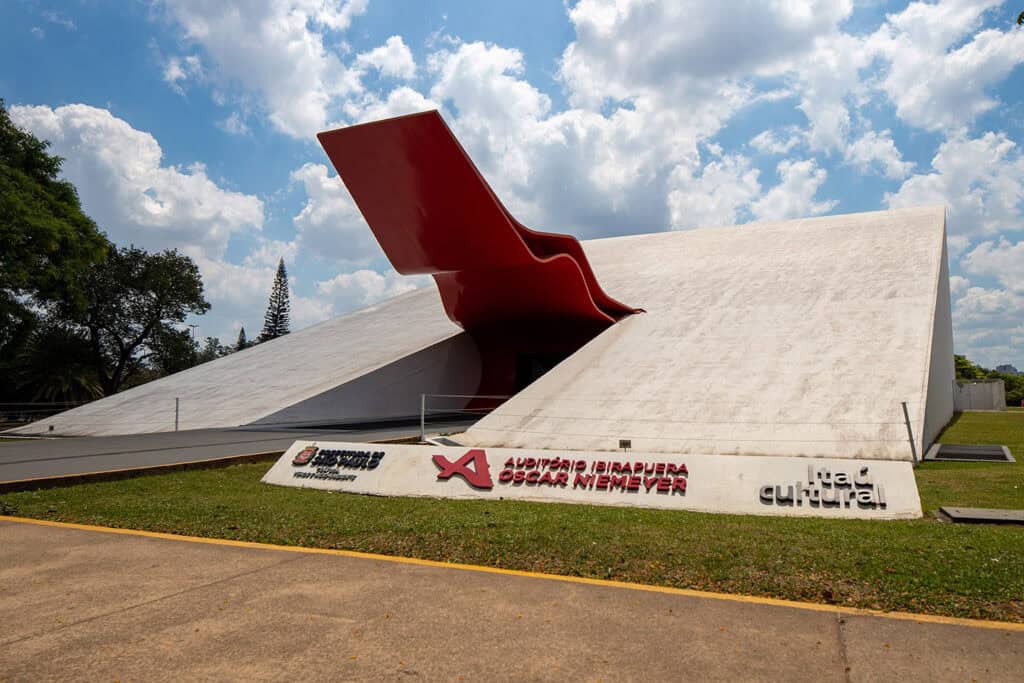
Oscar Niemeyer’s designs fit nicely with the Brazilian landscape, showing his respect for nature. Unlike Le Corbusier, who used practical city designs, Oscar Niemeyer made sure his buildings matched their surroundings. He used light and shadow to show off the natural beauty.
In Rio de Janeiro, his buildings highlight the beautiful coastal views and blend with the environment. His work creates landmarks celebrating Brazil’s natural beauty and showing how architecture can blend with the landscape.
Here are some examples of his work:
- Pampulha Architectural Complex: This site has buildings with curved shapes that fit the nearby hills and water. A reflecting pool shows the buildings and the sky, making the design blend with the landscape. Niemeyer’s work skillfully combines the buildings with their surroundings.
- Ibirapuera Park Buildings: In São Paulo, Niemeyer designed open spaces and simple buildings that make visitors feel calm. His work highlights Brazilian culture and the natural beauty of the area.
See Also What Are the Elements of Organic Architecture? 8 Key Elements
4. Minimalist Aesthetic with Monumental Scale
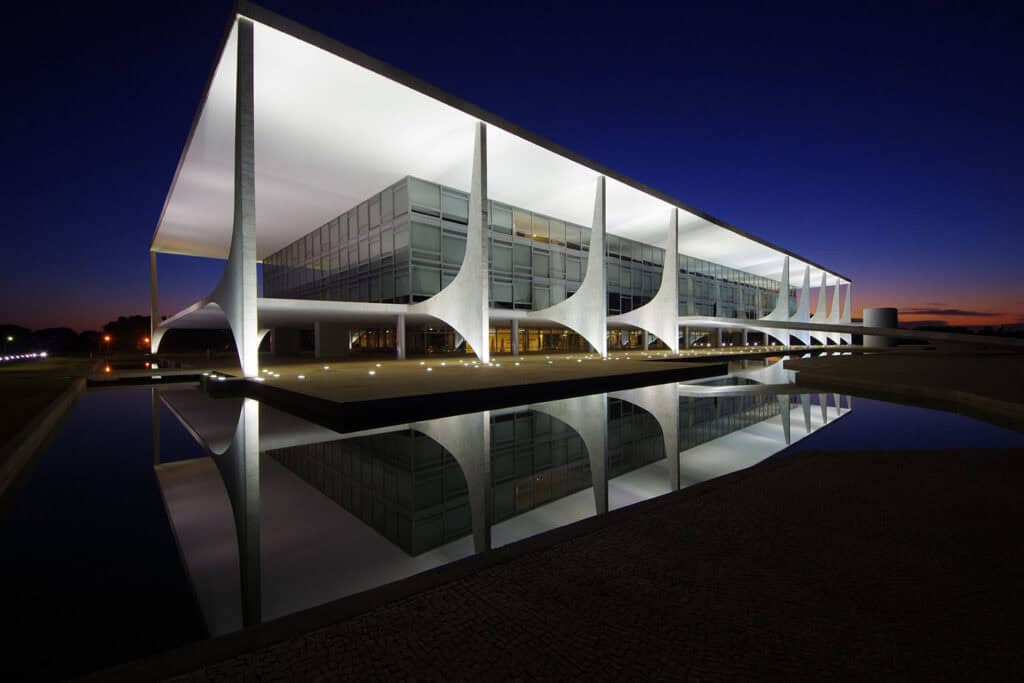
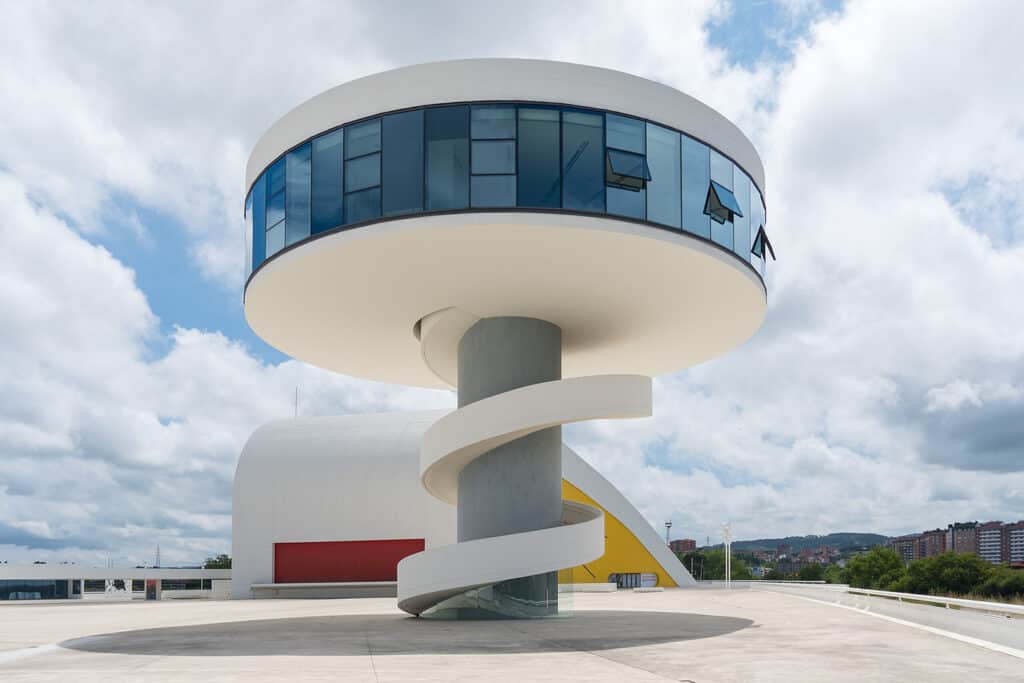
Oscar Niemeyer’s architecture is known for its minimalist style and large scale. His designs use simple shapes, clean lines, and open spaces. He uses light and air to shape the interiors, creating a feeling of openness.
Niemeyer’s style follows contemporary architecture by blending form and function. His work uses sculptural forms that connect the buildings to their surroundings. Each project is a useful and artistic landmark, shaping Brazil’s capital and pushing the boundaries of modern architecture.
Key examples of his work include:
- Palácio do Planalto: This building has big, flowing shapes that stand out. Niemeyer’s design is simple, using large curves and clean lines to create a strong, impressive look.
- Oscar Niemeyer International Cultural Centre: This building is big but simple. It has open spaces and smooth curves, with a striking white dome. Niemeyer used concrete and glass to make it look impressive. Inside, the airy spaces and curved walls make the center feel grand and welcoming.
5. Light, Shadow, and Color in Design

Oscar Niemeyer skillfully integrates light, shadow, and color into his architectural designs. His approach enhances the visual and experiential quality of his buildings.
- Light: Niemeyer’s use of curved shapes and open spaces allows natural light to enter freely, creating changing patterns of light and shadow. For instance, the Roman Catholic Cathedral has a curved roof that beautifully captures sunlight.
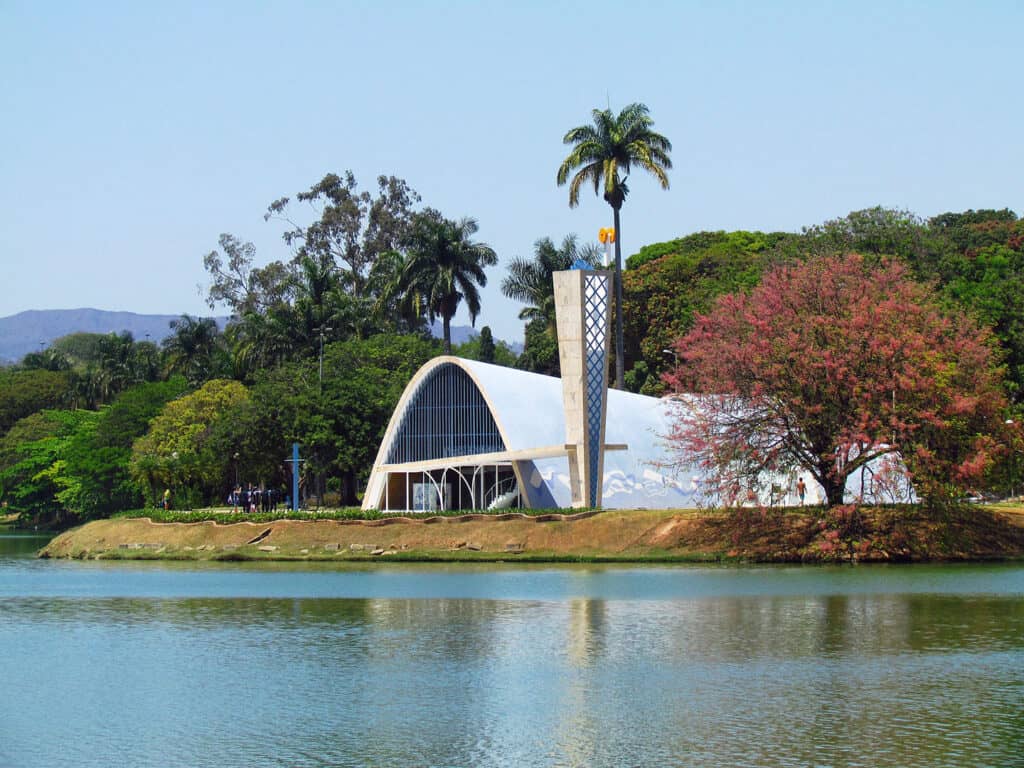
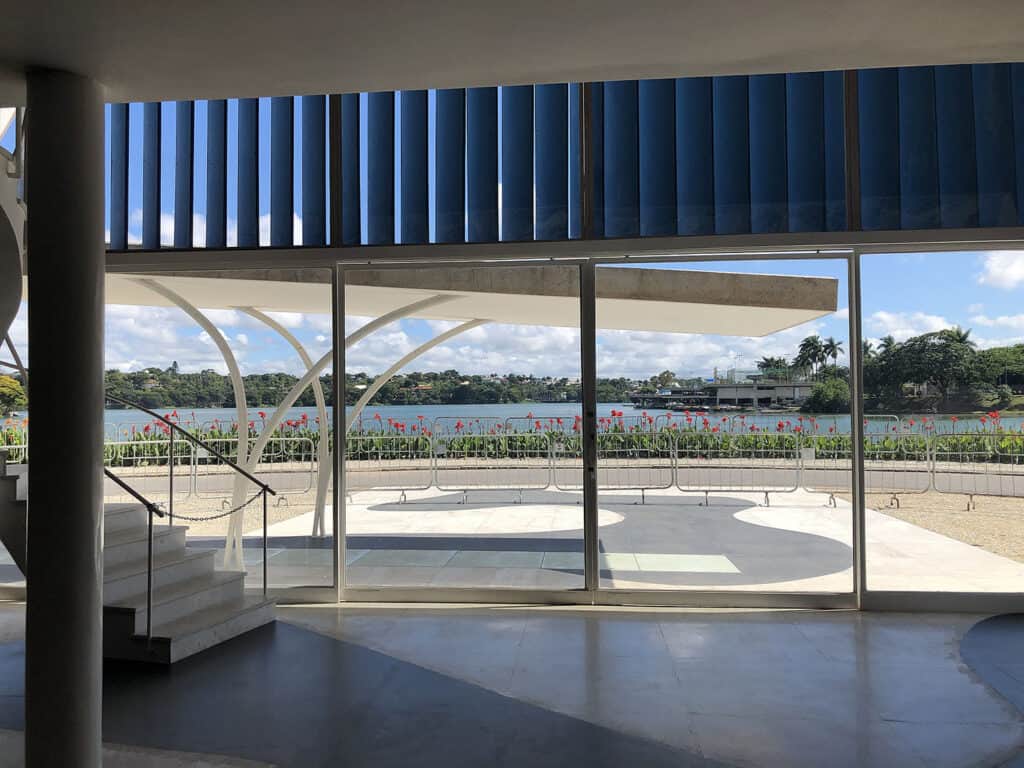
- Shadow: The interplay of light and shadow adds depth and texture to Niemeyer’s architecture. Changing shadows throughout the day brings a sense of movement and transformation to the spaces. An example of this is the Church of Saint Francis of Assisi, where the play of light and shadow enhances the building’s dynamic form.
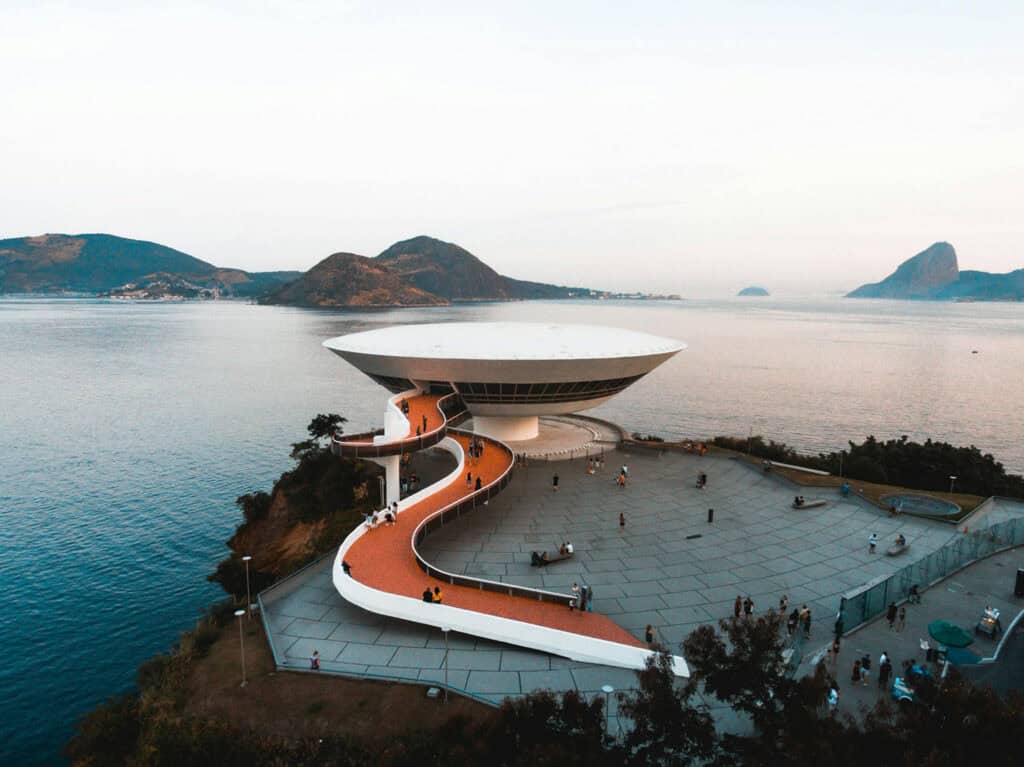
- Color: Color is a key element in Niemeyer’s work. The Museum of Contemporary Art in Niterói uses bold colors and distinctive shapes to create a striking visual impact. This use of color, combined with the building’s unique design, complements its natural surroundings and enhances the visitor experience.
6. Social and Political Ideals in Architecture
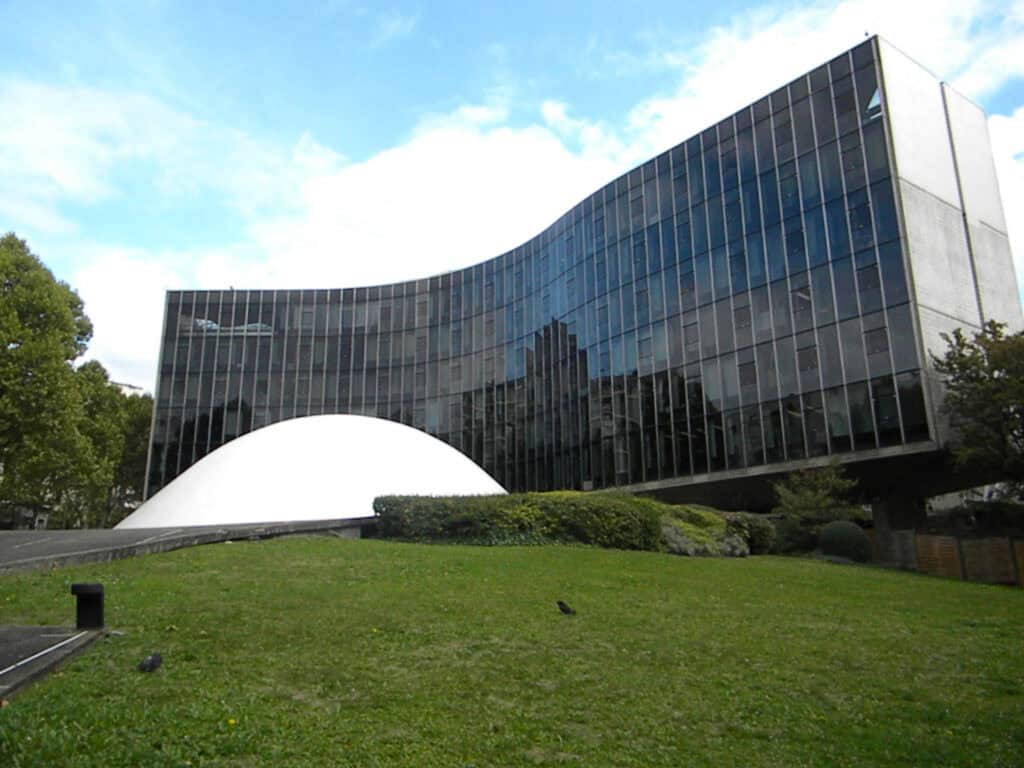
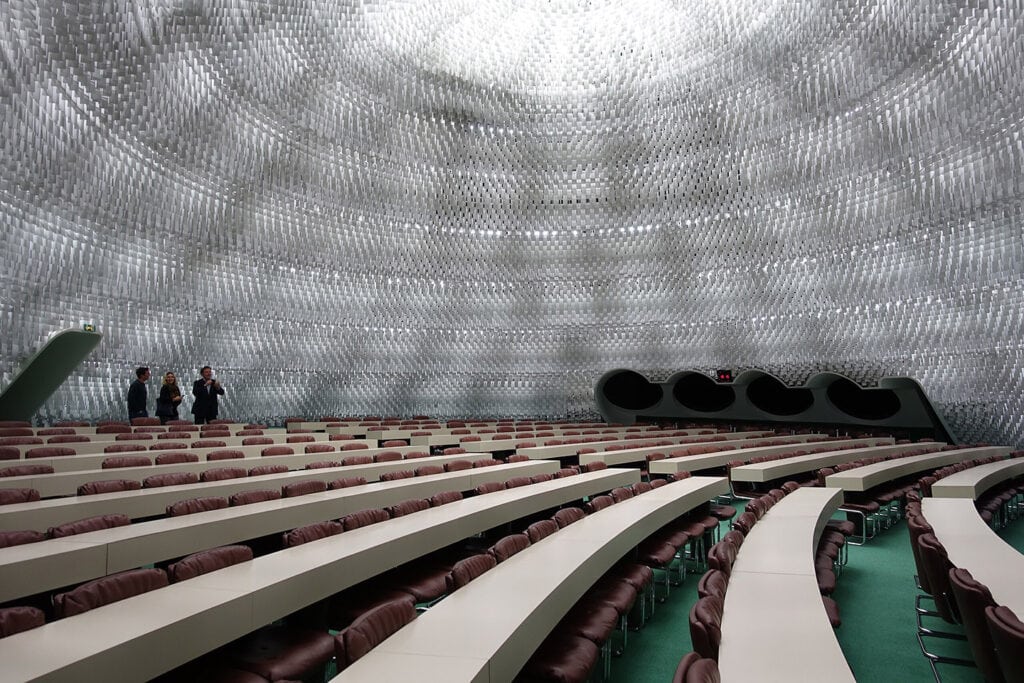
Oscar Niemeyer’s work shows his political beliefs. As a lifelong member of the Brazilian Communist Party, he wanted his designs to support equality and community.
Key Example:
- Communist Party Headquarters: This building shows Niemeyer’s focus on equality and community. Its open and welcoming design invites people to come together and interact. The space reflects democratic values and Niemeyer’s goal of creating a place where everyone can join and work together.
7. Futuristic and Visionary Approach
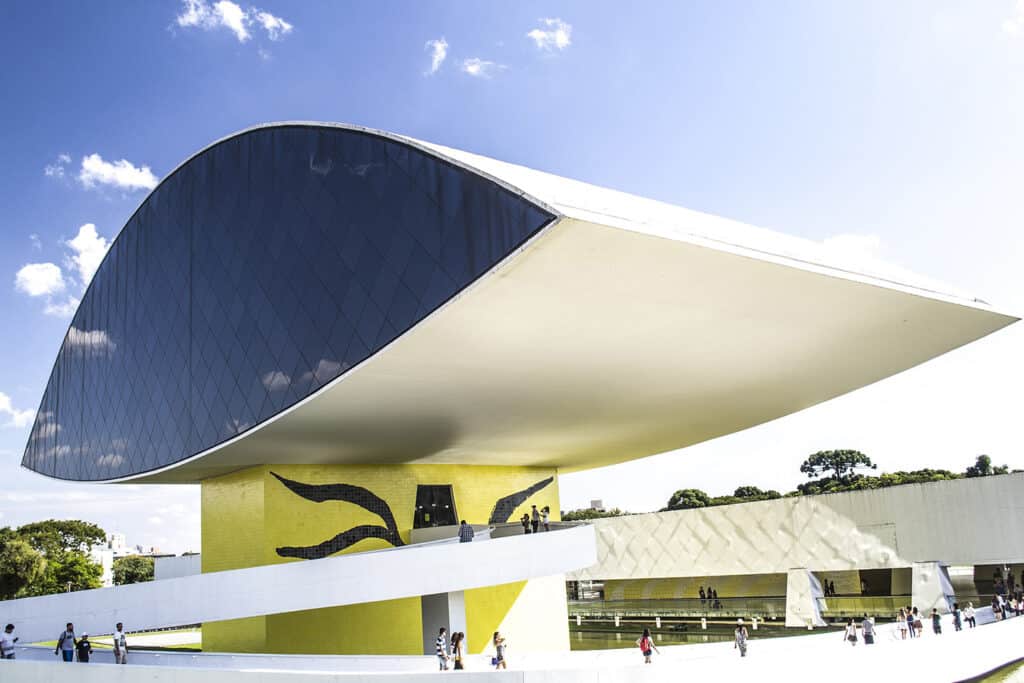
Oscar Niemeyer’s style is famous for being futuristic and visionary. His designs use sweeping curves and large open spaces, going beyond traditional architecture. In the creation of Brasília, the new capital city of Brazil, Niemeyer played a crucial role. He designed significant landmarks such as:
- The Oscar Niemeyer Museum: The Oscar Niemeyer Museum in Brazil exemplifies Niemeyer’s futuristic style with its eye-shaped design and bold curves. This unique structure combines architecture and art, making it a modern landmark that stands out as one of the famous buildings in Brazil while seamlessly blending with its surroundings.
Niemeyer’s work was famous around the world, and he won awards like the Pritzker Architecture Prize. His design for the Brazilian Pavilion at the New York World’s Fair showed how he combined local culture with global style.
Niemeyer’s idea for an international exhibition center changed how people experience architecture. His creative designs still influence architects everywhere, showing the power of modern architectural styles.
See Also What are the 5 Rules of Modern Architecture? Le Corbusier’s Concepts Explained
Oscar Niemeyer Architecture Style: A Recap
Oscar Niemeyer’s architecture uses curved shapes, and creative concrete, and fits well with nature. His designs mix simple forms with big ideas, using light, shadow, and color. They show his values and forward-thinking vision.
Niemeyer’s work still inspires people with its blend of art and usefulness, making a lasting impact on modern architecture.









